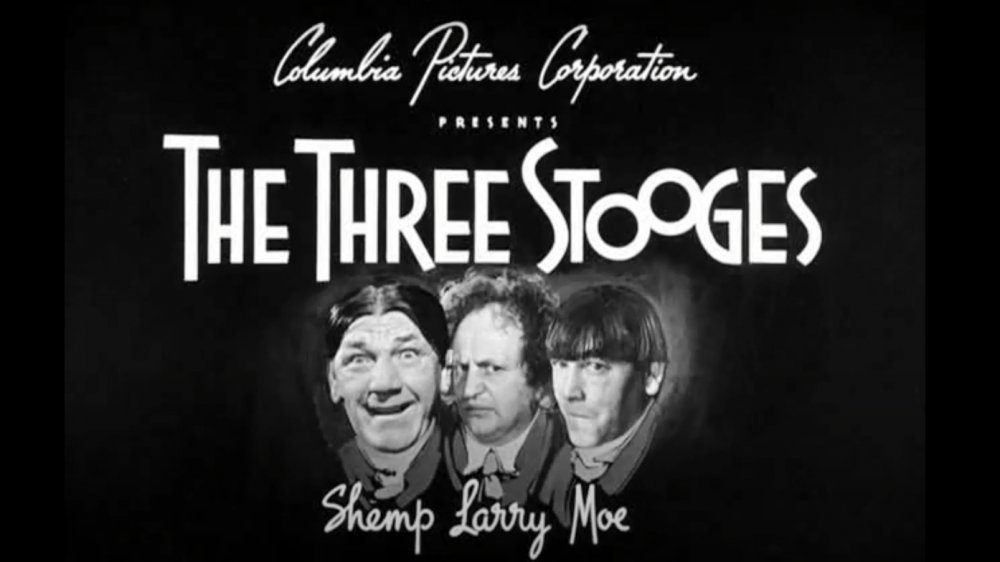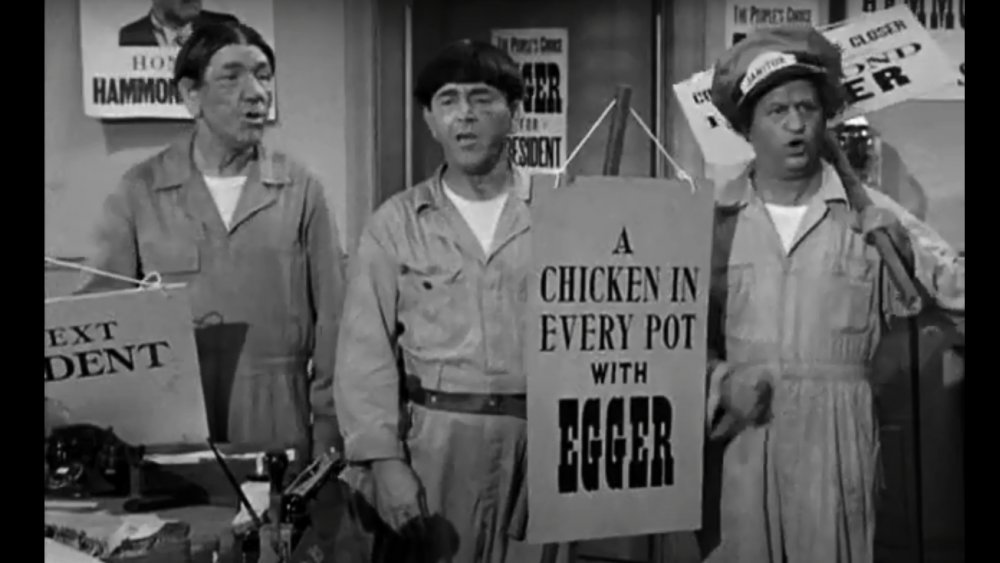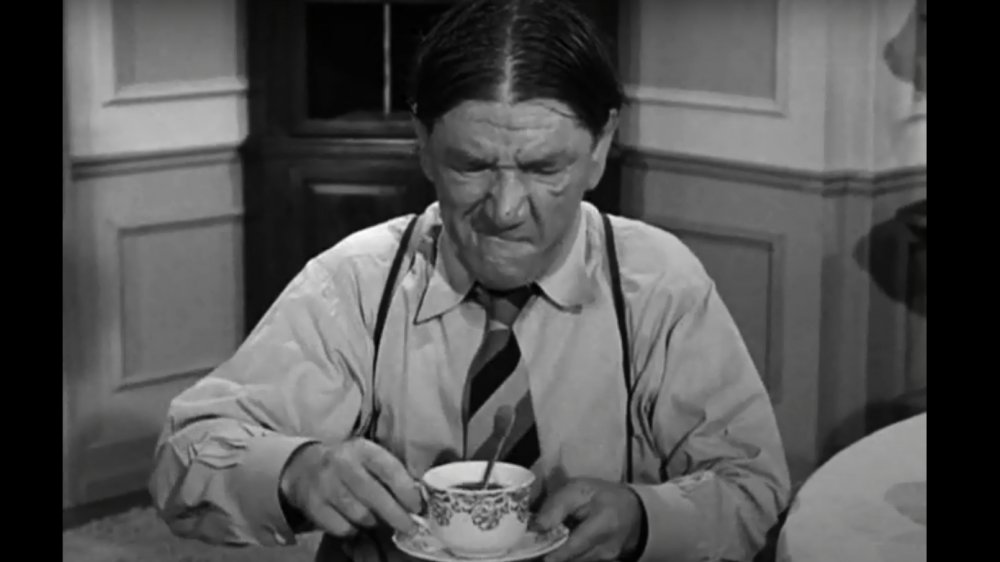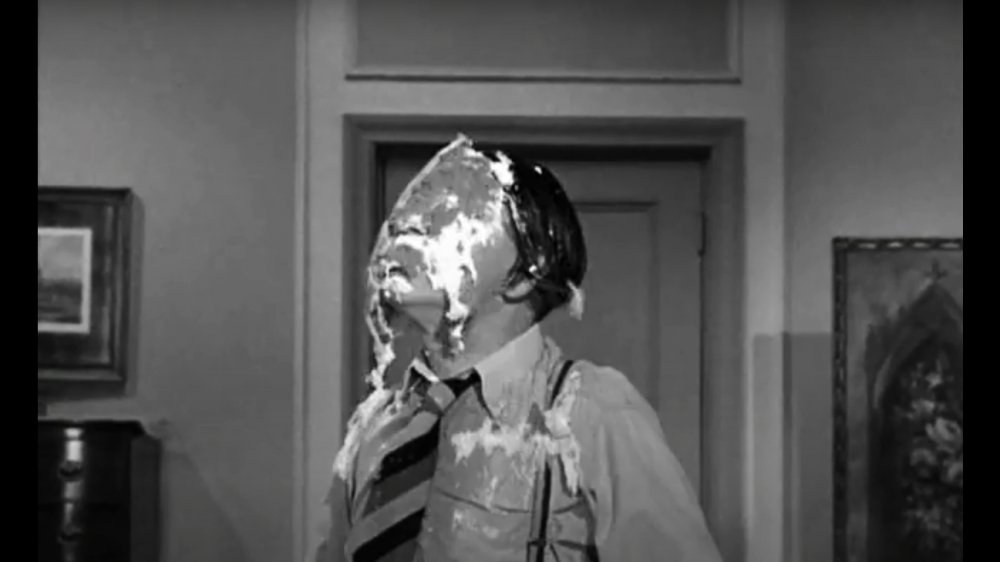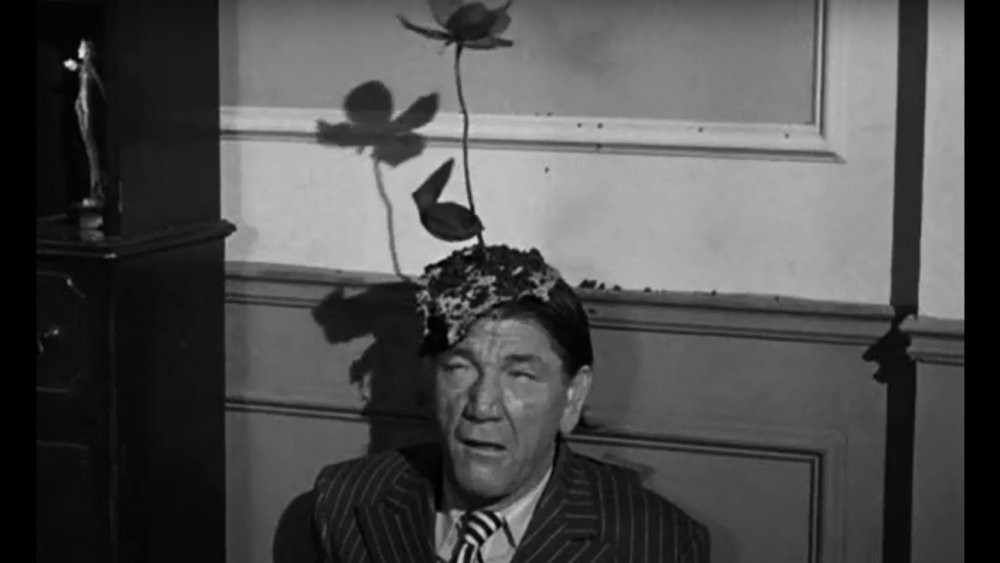The Real Reason Shemp Howard Left The Three Stooges
There's a perception out there that The Three Stooges, a trio of performers who pretty much defined low-brow slapstick comedy in American film, sort of burst onto the scene fully-formed, poking eyes and throwing pies and muttering "Why, you... ."
Moses Horwitz was the one who got the acting bug in a big (or bad) way. He skipped school repeatedly to spend the day at the theater, watching plays and other performances over and over again, enraptured by the idea of show business. He made repeated attempts to break in as an actor, and then took to vaudeville in a comedy duo with his older brother, Samuel. As Moe Howard explained in his autobiography, Moe Howard and the Three Stooges, they changed their name to Howard, "which sounded better than Horwitz and Horwitz," performing as Howard and Howard. The act was broken up when Shemp was drafted for service in World War I, but he was discharged after a few months — "he was a bedwetter," wrote Moe.
Shemp, Moe, and Larry stooged for years
This first time, love broke up the act. Moe and Shemp both married in 1925 (though to different women, of course) and Moe left performing to sell real estate. It didn't last long. He teamed up with straight man Ted Healy, a friend from their growing-up years, as a comic foil. Soon Shemp joined the act as well, with both Howard brothers serving as knockabout comics — "stooges" — to the tall and handsome Healy, the star of the act. The act was a hit, and before long Healy was earning $3,500 a week, of which he paid Moe $100 a week.
Shortly after they caught another vaudeville performer, "in high silk hat and tails, playing the violin and doing a Russian dance." Healy and the Howards recognized the possibilities to be developed, providing he got rid of the violin, and so Larry Fine joined the act as well in 1925.
Inanimate objects could be a Stooge's worst enemy
The act — "Ted Healy and His Southern Gentlemen," though, as Empire Online writes, the Howards were both New Yorkers and Fine hailed from Philadelphia — had the chance to go to Broadway, but Moe and his wife, Helen, now had a child. Though certainly Helen would have been understanding of the uncertainties of a show business career — she counted Harry Houdini among her cousins — Moe wanted to have a "real" job. A brief attempt at storekeeping led him to look up Healy again. The Stooges and Healy began rehearsing for A Night in Venice, staged by Busby Berkeley and including a performance by "the Stevens Brothers and their wrestling bear."
Broadway led to a film for Fox Studios (later 20th Century-Fox), Soup to Nuts, written by Rube Goldberg (yes, that Rube Goldberg). When it was completed, however, Healy back-stabbed the Stooges, convincing the studio to renege on their contract. Healy searched for another set of comics, and The Three Stooges faced a choice: go their separate ways, or seize an opportunity to go out on their own. They seized.
Where there's a Stooge, there's pie
Healy's replacements didn't work out, and he attempted to break up what was now Howard, Fine, and Howard — Moe, Larry, and Shemp. He tried to sue them for using "his" material in their new act; and attempted to lure them away as individuals with exclusive contracts. At least part of Healy's problems were a result of his growing dependence on alcohol; his ego and temper were rampant, causing friction and hard feelings. The Stooges moved to rejoin him, but Shemp put his foot down. "Ted is not the wonderful guy you think he is," he told Moe. "He's only one drink away from going back to his terrifying benders." For his part, Shemp had an offer to appear in films for Vitaphone, in California, and decided to take the offer and leave The Three Stooges, for the first time.
Shemp had a successful solo run as comic relief and character actor in films, and occasionally was cast in straight or even villainous roles, and was featured in his own two-reel comedy shorts, similar to what The Three Stooges cranked out for Columbia, per Britannica. He worked extensively for Universal Studios, including supporting parts for W.C. Fields and The Andrews Sisters, and in series like The Thin Man.
All in a day's work
In 1946, there was a Howard crisis, both familial and professional. Shemp had been replaced in the Stooges by youngest Horwitz brother Jerome — Curly. In 1946, while waiting to film the last scene of the day for Half Wits Holiday, Curly suffered the first of a series of devastating strokes. He was hospitalized and, except for a couple of cameos, never performed again. Moe took responsibility for his care until Curly's death in 1952 at the age of 49. Larry and Moe discussed options: stop, or re-cast? The solution: What about Shemp?
Shemp rejoined the act as they continued to produce short comedy films for Columbia for another nine years, as Mental Floss relates. On November 23, Shemp spent the evening with friends. He was "telling jokes when he suddenly dropped his head, leaned against one of the men, closed his eyes and, with a smile on his face, died," Moe related. Shemp was 60 years old when he left The Three Stooges for the last time.
